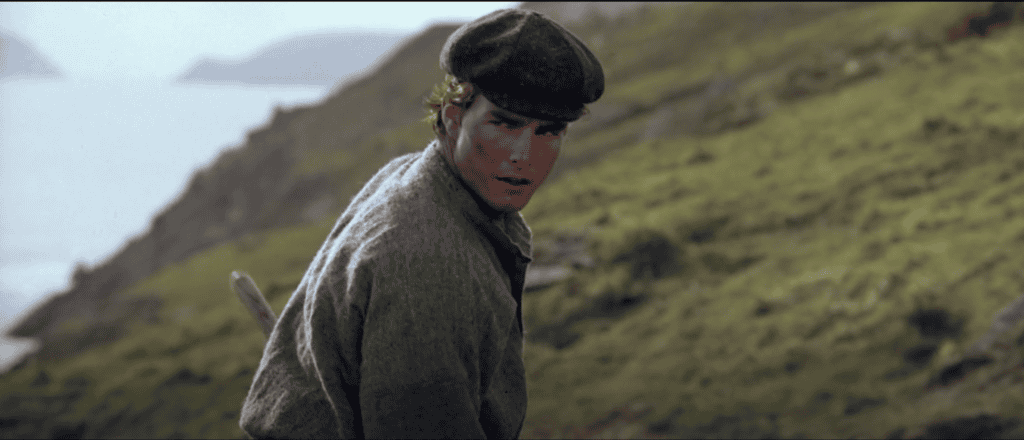Far and Away- Farm
Fán
|
Fahan
Address
Baile an Bhóthair
52.0995373
, -10.4449159

This location was used for several of the opening scenes, where Tom Cruise’s character is seen working the land. The dramatic slopes were the location of the family farm. A few buildings were created as part of the set, which were removed after production ended. The main village scenes were filmed at Ceann Sratha/Clogher Head, a few km to the north.
Film scholar Harlan Kennedy once asked, “Is Ireland a land at all, in the sense of a self-determining country and culture, or is it a product of everyone else’s perceptions?” (from “Shamrocks and Shillelaghs: Idyll and Ideology in Irish Cinema, published in 1994). Those of us who love and study film and live in West Kerry know that the land itself – the rolling hills, islands, the crashing waves, all featuring prominently in the first 14 minutes of Far & Away – is indeed very real. But, as Kennedy and countless others have argued both before and since, the broadly marketable idea of Ireland, or “Oirland”, as sold by films like Far & Away, is something different.
Part of the “problem” (if it is problematic) is authorship. As the opening credits tell us, against the backdrop of a village film set that was constructed practically adjacent to that built for Ryan’s Daughter, the story is “by Ron Howard”, an American Hollywood director. The starring performances are “by” Tom Cruise (American) and Nicole Kidman (Australian), with some Irish actors in supporting roles and West Kerry locals as extras. The substantive narrative text may be “about” Ireland, but it is very arguably not “by Ireland”.
Story-wise, more specifically, Far & Away concerns two Irish expatriates (Cruise and Kidman) from different sides of the tracks (or donkey path) who go to America looking for a new life to live and new land to own. On a thematic level, it, like many other films set in or about Ireland – including West of Kerry and Ryan’s Daughter – concerns what film scholars have recognized as Irish people’s stereotypical tendency (definitely on film, but also in much popular and historical discourse) towards “atavism”. Countless narratives seek to uncover Irish people’s “natural” propensity to revert to ancient and primitive behaviors, almost always entailing male violence. As Joseph Donnelly (Cruise) says over and over again in Far & Away, “I have no wish to fight you”… but he always does.
This narrative and ideological cliché satisfies multiple needs across multiple cultures, but most obviously in American and British contexts. In British culture, “the myth of Irish atavism” has allowed for films’ subtextual defense of colonialist policies and politics. In American culture, it has allowed for a subtextual defense of globalising policies and politics, but also for a way for Irish-American and other white Americans to talk about ethnic and class differences in a “safe” way. In this case, the historical fact of the disenfranchisement of Irish emigrants at the end of the 20th century is used to defend American capitalist culture.
Even more specifically, Far & Away defends “late stage capitalist” culture, if we are to agree with Fredric Jameson that “late stage capitalism” is broadly synonymous with postmodern culture. The Ireland of Far & Away is not so much the Ireland of the “real land” it images, but the Ireland of Ryan’s Daughter that it re-images and re-imagines. In its first sweeping shot across the water, traveling over to its specially-built village set, you can glimpse the silhouette of Ryan’s Daughter’s schoolhouse, itself purpose-built for an even more famous film. In the words of theorist Jean Baudrillard, “the map precedes the territory”; the film set precedes the community; and they co-exist today.

